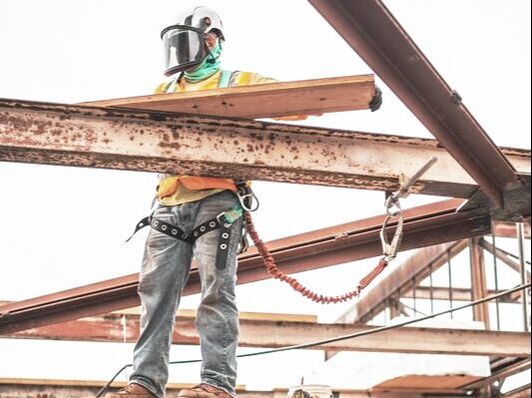|
Falls have continued to be the leading cause of occupational deaths in the United States for over 10 years accounting for nearly 1,000 deaths yearly. The unfortunate part, all falls are preventable. Multiple organizations partner with OSHA each year to have both educational and promotional campaigns to help prevent falls and save lives in their industry. One thing is clear, training and employer provided resources are key in helping prevent falls in the workplace.
OSHA has two primary fall prevention standards:Each focus on the three principles of Plan, Provide, and Train. These principles assist in the prevention of falls within the industry in addition to providing a more well-rounded worker. Plan Proper planning through a Job Hazard Analysis or Job Safety Analysis (JHA/JSA) is the acceptable method of identifying hazards on a jobsite or facility. Through the use of JHAs, workers collaborate and communicate to come up with a safe way to perform the task at hand. While providing the safest process, recording the information for estimators will also allow for safety equipment to be included for future work. As each day begins, the JHA should be reviewed in a morning huddle or pre-task plan to make sure that conditions have not changed or that additional equipment, personnel, or tools are not necessary to complete the day’s work. Creating a plan and adjusting the plan as new conditions arise are a vital part of getting the job done safely. Provide Providing the right tools and equipment is the second most important component of ensuring worker safety. Before the project begins while using the JHA and past experience, the employers or supervisors should identify what tools or equipment are needed to get the job done. Once that happens a valiant effort should be made to provide all possible means to ensure worker safety. Is a lift required? Is a personal fall arrest system (PFAS) needed? Do you need guardrails or floor coverings? All these questions need answered before any work begins. As an employer, it is your responsibility to provide the equipment and resources needed to complete the work in the safest manner possible. Train Understanding how and when to perform certain tasks is key to preventing falls in the industry. Training on how to use personal fall arrest systems (PFAS), ladders, scaffolds, and guardrails are critical components of a fall prevention program. Not only should workers be trained on how to use a specific tool or piece of equipment, they should also know how to recognize and mitigate hazards as they are made apparent. Supervisors should verify worker training and their competency to make sure employees can identify and mitigate hazards as they work. If a worker fails to complete a task or has a near miss then retraining may be necessary to make sure that there is not an accident in the future. It is a proven fact that with proper knowledge, equipment, and collaboration all falls are preventable. Planning for tasks, Providing proper equipment, and Training your employees are critical parts to fall prevention plans that will save lives. To keep the conversation going, download the General Fall Protection Toolbox Talk (TBT) or comment below.
0 Comments
|
AuthorSTAC Admin Categories
All
Archives
July 2024
|


 RSS Feed
RSS Feed